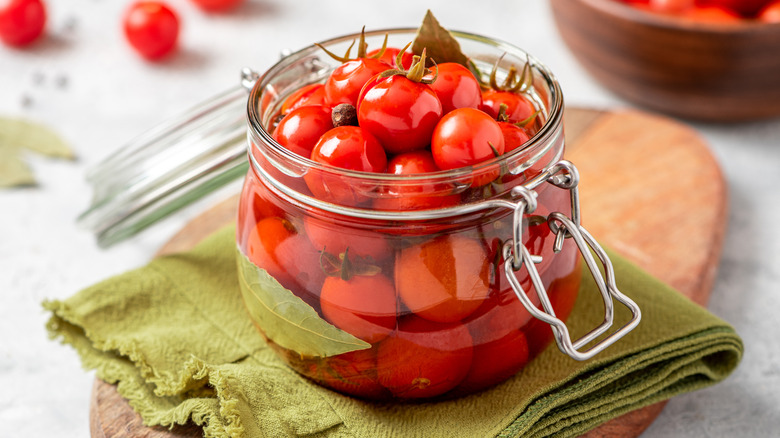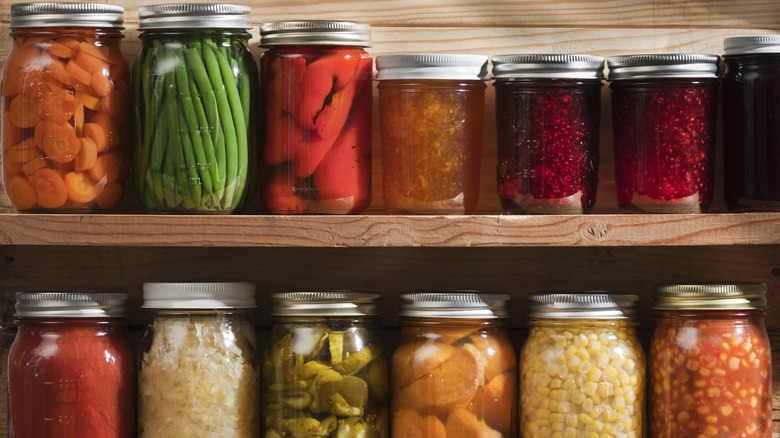Acidity Is Key To Ensuring Safe Home-Canned Tomatoes
When summertime rolls around, tomato enthusiasts often revel in the bounty of their fruitful tomato vines. As the season ends, one way to ensure that the freshness of these tomatoes extends throughout the year is by home-canning. This practice, a delicate balance between science and art, carries an essential element many may overlook: acidity.
Acidity in home-canned tomatoes isn't just a factor influencing flavor, but also a critical component of food safety. While their juicy allure is undeniable, tomatoes sit on the pH borderline, creating a challenge for safe canning. Tomatoes generally have a pH level between 4.3 and 4.9, which puts them near the borderline between high-acid foods (those with a pH level of 4.6 or lower) and low-acid foods (those with a pH level higher than 4.6).
Because of this, when canning tomatoes at home, adding an acidifying agent such as citric acid or lemon juice is recommended to ensure safety. The additional acid ensures that the pH level falls safely into the high-acid range, preventing the growth of harmful bacteria such as Clostridium botulinum. Understanding the role of acidity in this process is pivotal in ensuring canned tomatoes are safe for consumption.
The key to the acidification process
The process of acidifying home-canned tomatoes is simple and easily integrated into a canning routine. According to the National Center for Food Preservation, for every pint jar, add either 1 tablespoon of bottled lemon juice or ¼ teaspoon of citric acid directly into the jar before adding the tomatoes.
Once the jars are filled and properly acidified, they undergo a heat processing step, either via a boiling water bath or a pressure canner. The heat accomplishes two tasks. First, it destroys microorganisms present in the food and jars. Second, it forces out the air inside the jars, creating a vacuum seal as they cool.
If you're a fan of vinegar, you'll need 2 tablespoons per pint. While this step is essential for safety, it also significantly preserves the tomatoes' flavor. The additional acid gives tomatoes an extra tang, subtly enhancing the flavors in your later culinary creations, whether that's a hearty winter stew or a vibrant pasta sauce.
Acidity in practice-safety and flavor
After successfully acidifying tomatoes, the next step is to seal each jar properly. As the jars cool, they form a vacuum seal. That popping sound isn't just satisfying; it's a sign of a job well done. If you're missing that melodious pop, the jar will need to be reprocessed or refrigerated for immediate use, ensuring the safety of your canned tomatoes.
As you secure the lids on the jars, double-check that each is firmly closed to form a seal. This seal is essential because it locks out air and microorganisms that can lead to spoilage. If a lid isn't tightly sealed, place it in the refrigerator for immediate use to ensure the safety of the canned tomatoes. With the jars securely sealed, it's time to talk about storage. Canned tomatoes prefer a cool, dark, and dry place, ideally with temperatures between 50 and 70 degrees Fahrenheit.
To sum it all up, acidity is the secret ingredient in the home-canning process, providing not just tanginess but also peace of mind. Regardless of how tangy homegrown or heirloom tomatoes taste, don't skip the acidification step. Tomato varieties can vary in acidity, and it's better to be safe than sorry.


